China looks to Bernese space expertise
A delegation of Chinese space researchers tested and calibrated an instrument for China's 2020 mission to Mars at the University of Bern. Even the "Tagesschau" was interested. The inside story.
I learned that the Chinese were coming to Bern in an e-mail. The e-mail was from Peter Wurz, professor at the University of Bern Physics Institute and Co-director of the Space Research & Planetary Sciences Department (WP). He was providing information for Swiss television about the landing of a Chinese space probe on the far side of the moon, and wrote that
"Switzerland is in talks with our Chinese colleagues on greater cooperation in space exploration. There are already a number of projects [...] and discussions on participation in future missions. For example, our Chinese colleagues are coming to Bern next week to use our calibration systems to test and calibrate an instrument for measurements in the orbit of Mars."
As I am the "Space" representative in the Communication and Marketing Office, I was naturally excited, and called Peter Wurz immediately. On the phone, he told me that "researchers from all over the world come to Bern to calibrate their space instruments, because the only facility that can generate this type of particle is right here at the University of Bern." He invited me to observe the tests and take a peek over the shoulders of his Chinese colleagues.
So, together with a photographer, I head to the Exact Sciences building ("ExWi"), whose basement houses the calibration facility MEFISTO. Peter Wurz welcomes us in his office. As we walk along the building’s winding corridors, he tells us that a Chinese mission to Mars is to be launched in 2020, at which time the planet's position relative to Earth will allow as short as possible a journey. Outside the laboratory where MEFISTO is located, Peter Wurz tells us about the calibration facility. "The abbreviation MEFISTO stands for MEsskammer für FlugzeitInStrumente und Time-Of-Flight. [measuring chamber for flight time instruments and time of flight]. The facility accelerates particles to simulate the situation in space."
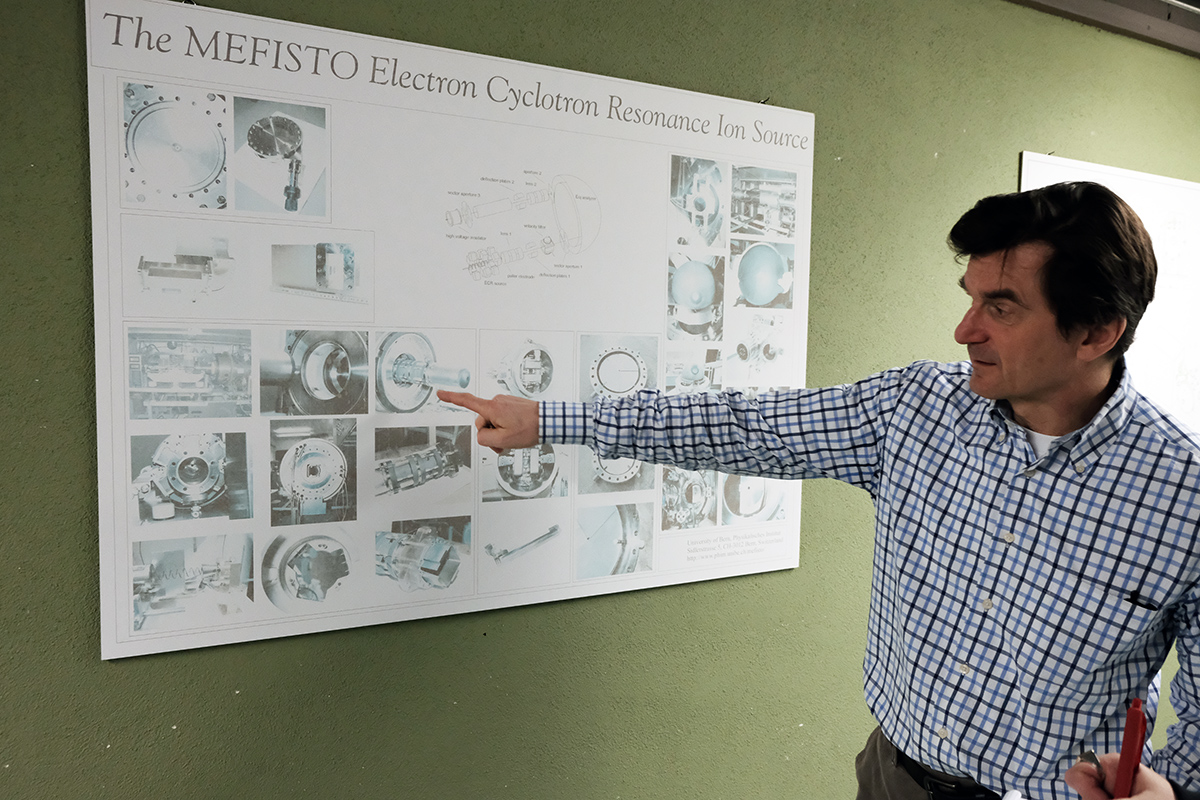
As he explains, the radiation and particle environment in Mars’ atmosphere is currently being simulated for the Chinese delegation. "As we know exactly which particles and how many will hit the Chinese instrument in the facility, we can calibrate it so that it will later measure what it is supposed to on Mars and the measurements can be interpreted correctly." Peter Wurz tells us that the facility was built here at the University of Bern and has been in operation since 2002, and that NASA, ESA and all other space agencies also come to the University of Bern to calibrate and test their instruments – because it is the only facility in the world where this is possible.
Visiting the clean room with the Chinese delegation
We enter the laboratory. The Chinese scientists are in the process of preparing their Mars instrument before inserting it into the calibration chamber. They are assisted by the technicians Adrian Etter and Joël Gonseth from the University of Bern. All this is happening behind a plastic curtain in the "clean room". The photographer and I are also given coats to put on as a single grain of dust in the clean room could ruin the measurements.
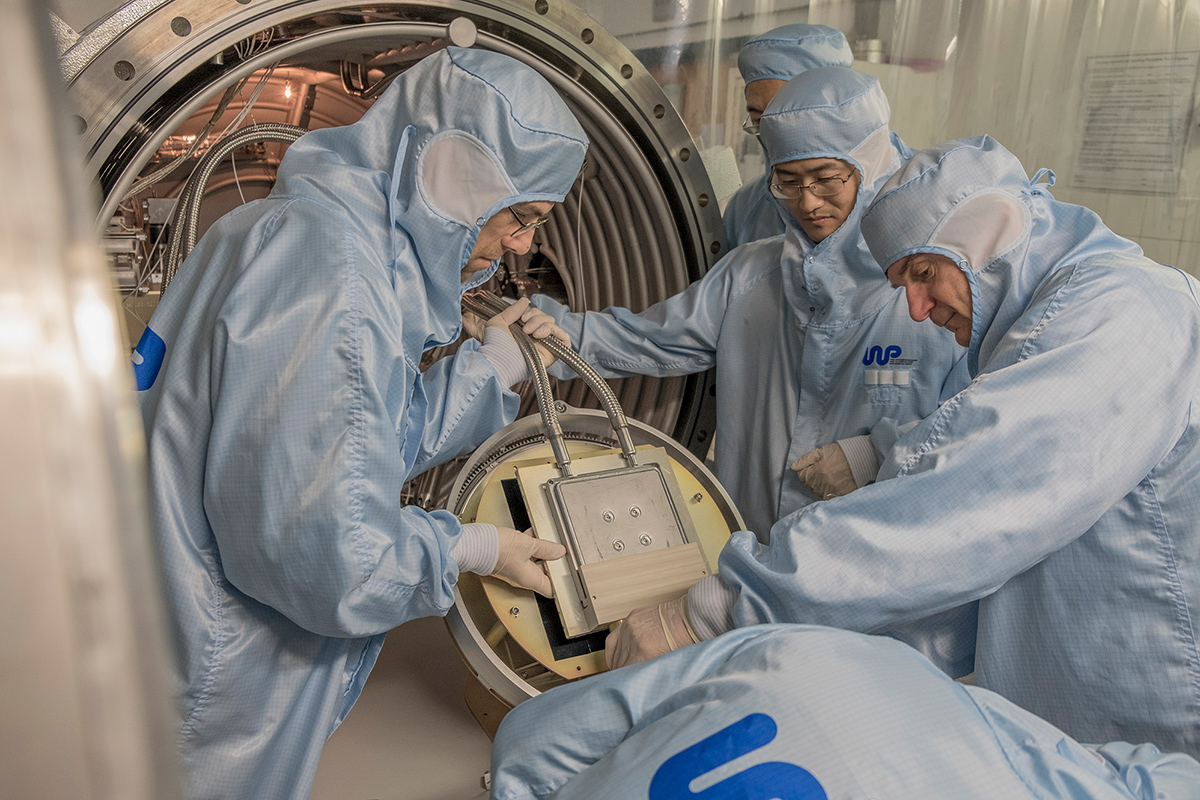
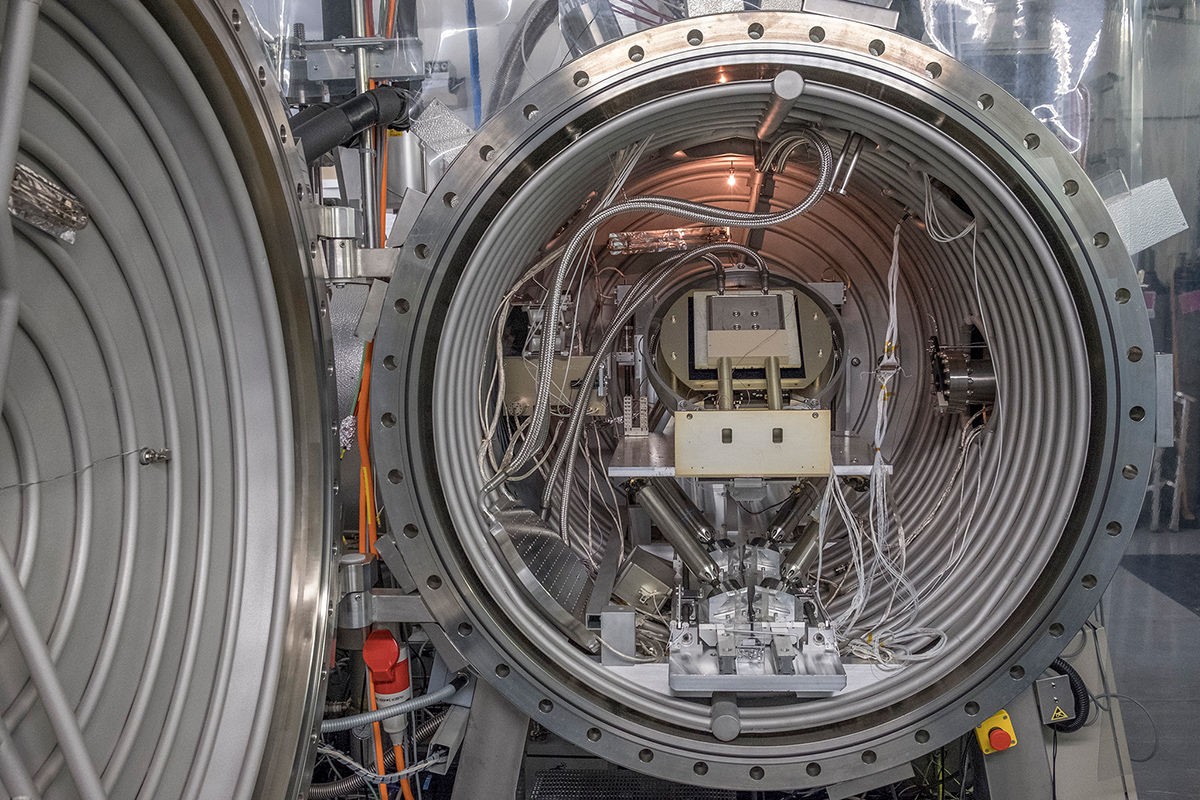
Peter Wurz explains that China is an emerging nation in space research and space travel. The recent moon landing is just one example of this. Asked how contact with the University of Bern came about, Wurz replies that "people in the space exploration community know each other. And now that China is expanding its work, Chinese researchers are of course also attending scientific conferences. They approached us after colleagues told them about our expertise here at the University of Bern." According to Peter Wurz, the State Secretariat for Education, Research and Innovation (SERI), which coordinates and promotes Swiss space policy and activities, supported and advocated the collaboration.
I get the chance to have a brief conversation with Linggao Kong. He is a professor at the National Space Science Center at the Chinese Academy of Science, and, together with his team, built the instrument that is currently in the calibration facility. "We are very happy with our partnership with the University of Bern. The expertise here is impressive," he says. When the data from the instrument arrive, Linggao Kong will also be involved in their evaluation. Peter Wurz and his team will also analyze the data, continuing the scientific partnership.
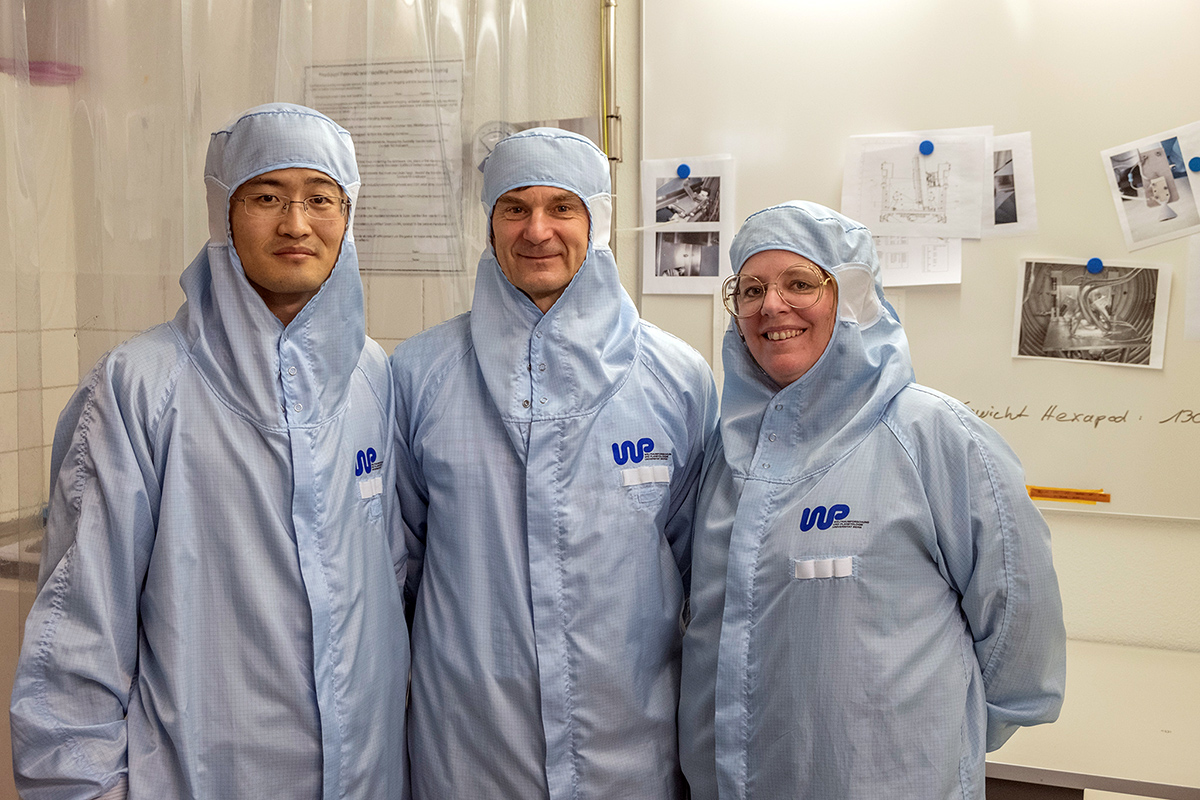
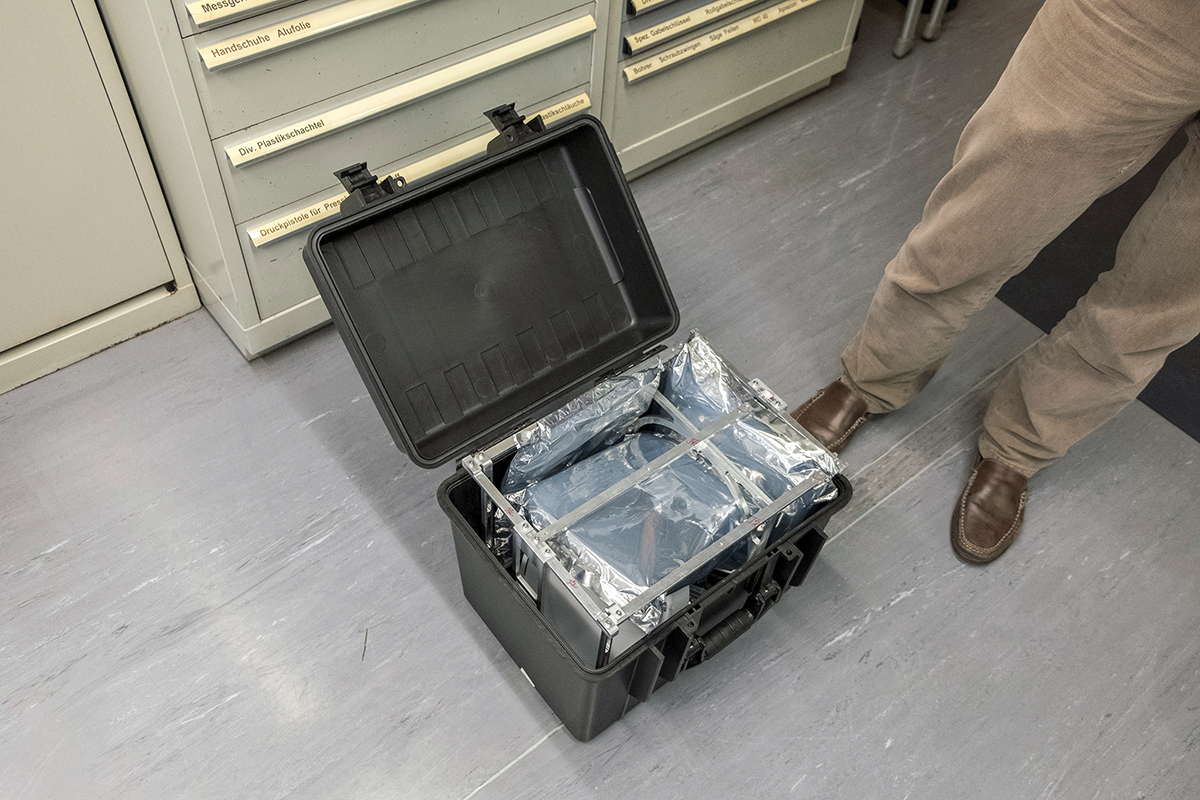
I do still have one question: how is such an important instrument transported? Peter Wurz laughs. "It traveled as hand luggage in a specially reserved seat. Sometimes, the instruments also arrive in special boxes that have to be very well padded."
The "Tagesschau" comes to visit
A few days after my visit to ExWi, Swiss television picks up the topic again. They want to produce a report for the daily news on China’s growing role in space exploration, and the collaboration with the University of Bern. When the journalist arrives at the University of Bern with a cameraman, I accompany him to the laboratory together with Peter Wurz. I am pleased to see how the Chinese scientists talk just as openly in front of the camera. Peter Wurz also gives a clear and confident interview, although media appearances are not part of his everyday job.
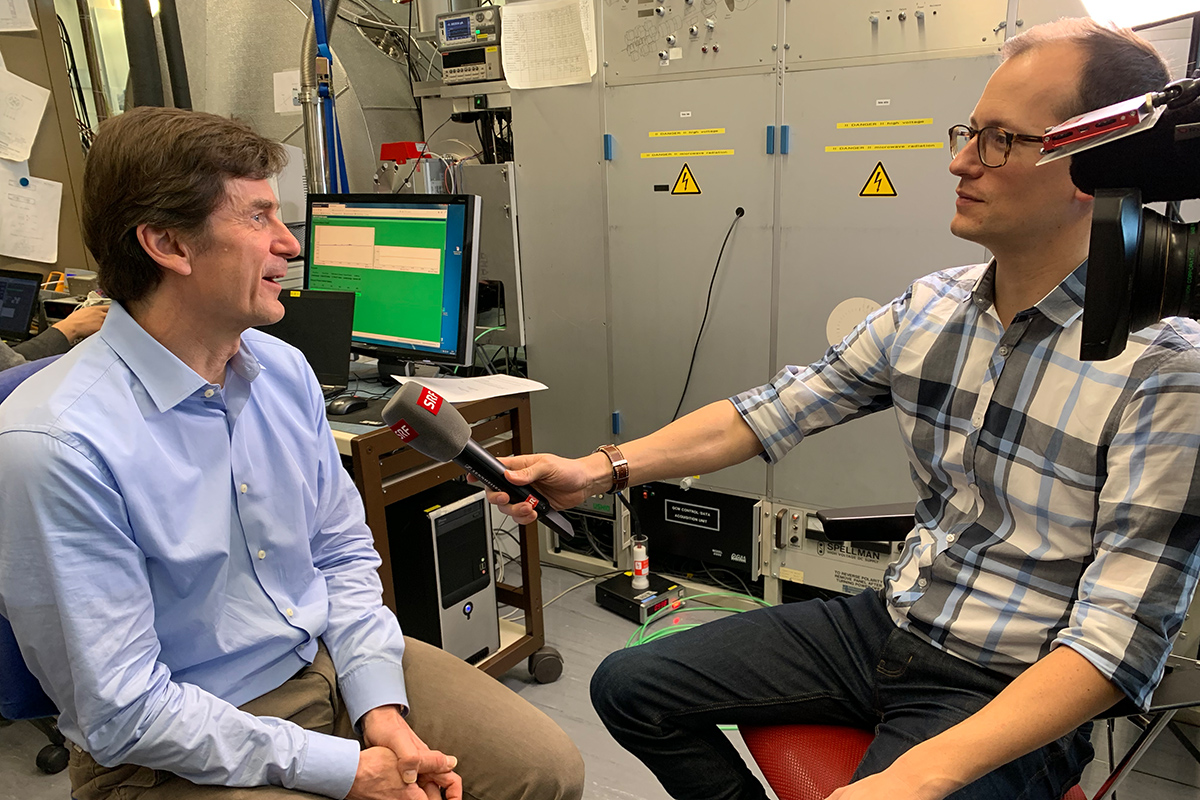
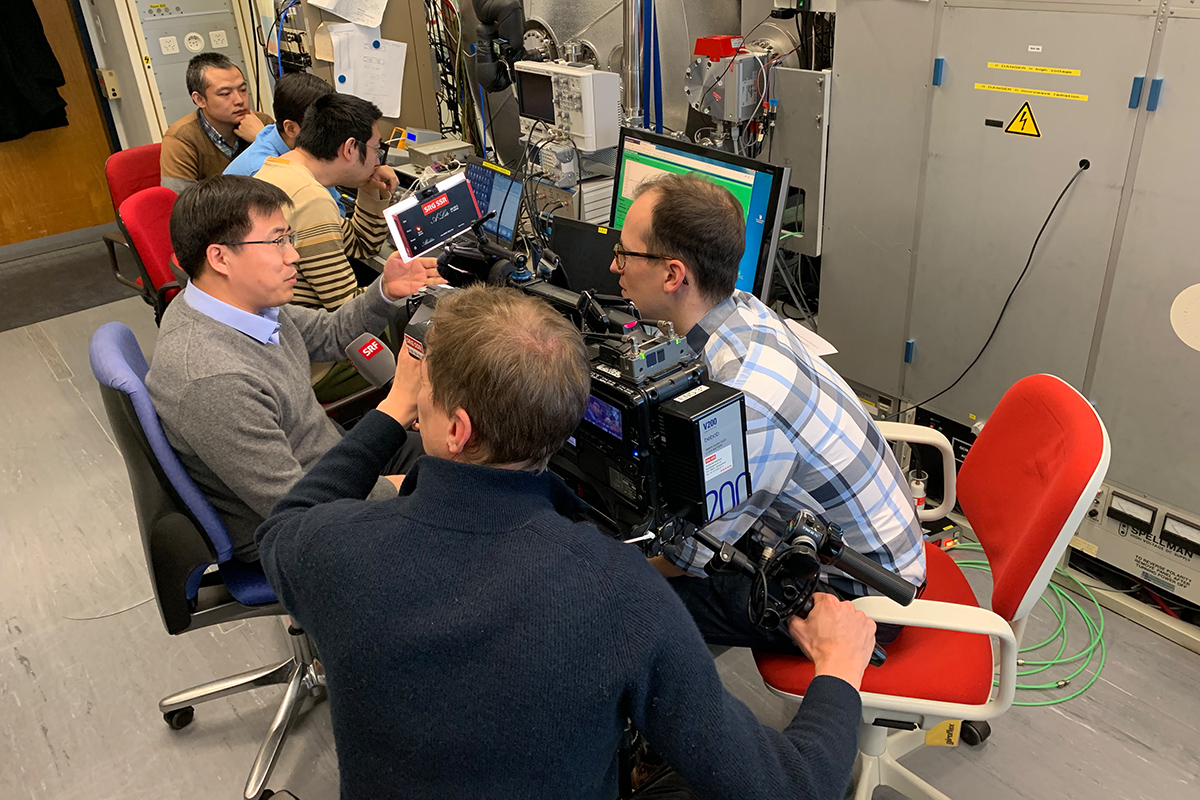
Shortly before the Chinese delegation departs, we go back to the ExWi building to take one final group photo. Everyone is in a good mood. All tests have apparently been successful and the instrument is ready for its 2020 journey to Mars.
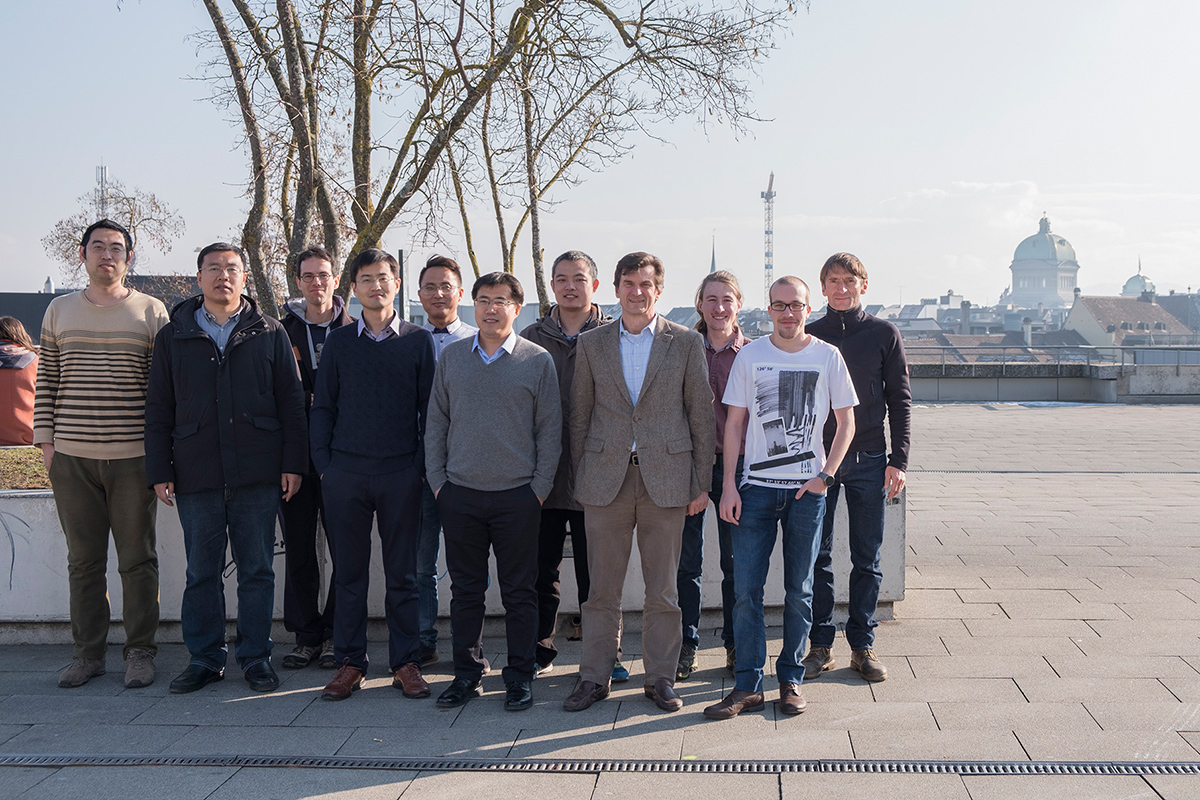
SRF "Tagesschau" reports, Monday, January 28, 2019 (in German)
Space research in Bern: at the forefront of world technology for 50 years
Bern's space research in figures shows an impressive portfolio: 25 times instruments with rockets have flown into the upper atmosphere and ionosphere (1967-1993), 9 times on balloon flights into the stratosphere (1991-2008), 33 instruments have flown on space probes, and a satellite was built (CHEOPS, launch 1st half 2019).
The successful work of the Department of Space Research and Planetology (WP) of the Physics Institute of the University of Bern was strengthened by the establishment of a university centre of excellence, the Center for Space and Habitability (CSH). The Swiss National Science Foundation also awarded the University of Bern the National Centre of Competence in Research (NCCR) PlanetS, which it manages jointly with the University of Geneva.
About the person
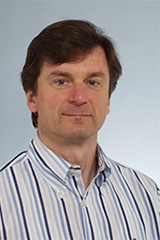
Peter Wurz has been Professor at the Physics Institute of the University of Bern since 2008 and, together with Willy Benz and Nicolas Thomas, heads the Department of Space Research and Planetology (WP). After training as an electronics engineer, he studied technical physics at the Vienna University of Technology. He then worked as a postdoctoral fellow at the Argonne National Laboratory, Chicago. He has been working at the University of Bern since 1992. His work focuses on the origin and evolution of planets by measuring the chemical composition of the atmospheres and surfaces of planets.
Contact
Prof. Dr. Peter Wurz
University of Bern, Physics Institute, Space Research & Planetary Sciences (WP)
Telephone direct: +41 31 631 44 26
E-mail: peter.wurz@space.unibe.ch
ABOUT THE AUTHOR
Brigit Bucher is Head of Media Relations and the "Space" representative at the University of Bern Communication & Marketing Office.